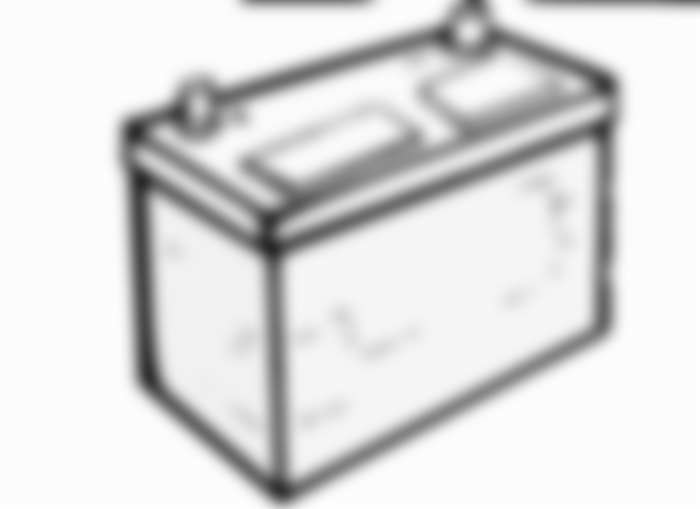Winter is coming, and many drivers have not prepared their cars for all the challenges that this season brings. One of the most common "culprits" for winter troubles is the battery. So let's see how to help him survive the cold days and continue to serve us for many more years.
The lower the temperature, the weaker the battery, and it is necessary to change some habits if we want it not to betray us at the worst moment. That is the moment when the sun has not yet risen, the temperature is ten degrees below zero, the wind is mercilessly blowing, the rare drivers you meet do not have ignition cables, and you forgot your mobile in another jacket.
So make sure in time that the electrolyte completely covers the plates. If this is not the case, add distilled water. Today, many have modern batteries that do not require maintenance during their lifespan, but even with them it is sometimes necessary to add water. Gel batteries also relieve the driver of this type of worry.
Dirty or corroded terminals and battery poles are often a problem. Therefore, they should be checked from time to time and, if necessary, removed and cleaned with sandpaper, a wire brush or some sharp object. When performing this operation, first remove the terminal from the negative, then from the positive pole, and return first to the positive, then to the negative.

It also helps if you lubricate them with a special grease or spray with a terminal protection spray (maybe WD-40). Even if the battery does not cause you any problems, perform periodic inspections, as clean contacts ensure a more correct charge, which means that it will last longer. Don't forget the ground connector on the body - it also needs to be cleaned.
You can also perform the test at a service center, where they can reliably check the voltage, current and electrolyte condition. Beware, however, of those who, after a very poor diagnosis of the condition of the battery, will offer to buy a new one from them on "very favorable terms".
Complete discharge of the battery should never be allowed, as it leaves really severe consequences and drastically shortens its lifespan.
Short rides don’t help
If your car stays in the parking lot or garage for a long time, it is best to remove the battery and put it in a warm and dry place. Many drivers in such situations start the engine every few days and let it run "idle" for fifteen minutes, thinking that this helps both the engine and the battery.
Experts, however, say that such a short time is not enough to charge it. Even a short ride will be counterproductive. So, in winter, avoid driving short distances as much as you can. If you are forced to do so, try to reduce the number of electricity consumers, such as seat heaters or radio/CDs.
Battery consumers that are rarely thought of
Leaving the lights on on the car - there is nothing worse for the "health" of the battery. If he doesn't "squeeze" it completely, the lights will at least significantly shorten his lifespan.
However, there are some devices that constantly consume electricity even when the key is removed from the ignition switch. It is, for example, an alarm - it must always be on standby. The same goes for the memory functions of audio devices, central computer, seats (for more luxurious cars, of course) ...
Even an hour consumes electricity. Very, very small amount, but when the consumption of all devices and systems is added up and if it is a longer period of time, the impact on the battery can be serious.
It is very important that when starting the engine, all consumers are turned off - lights, heating, audio device, wipers. Each additional consumer increases the shock that the battery survives during starting.

"Winter dream"
If you plan to leave the car parked for a long time in the winter, the battery will discharge after a certain period. Therefore, after three to a maximum of eight weeks, you should take a longer ride to recharge or charge it with a charger. How long the battery will retain adequate power without recharging depends on the type, air temperature, age and "wear".
If you are unable to provide it with a longer ride, take it out and store it warm. It would be good to check his voltage with a measuring device even then and top up if necessary. Do the same before returning to the car.
Keep in mind that with newer cars, returning the battery is not that easy (the same goes for cleaning the terminals). For example, you will need to enter an audio device code or calibrate a tire pressure monitoring system. You will find all the information about these procedures in the vehicle's owner's manual, and read it in detail - it will help you save a lot of time, and probably some money.
Thermal protection
Many owners, especially older cars, protect the battery with styrofoam, rags or cardboard in the winter. While experts say that such protection has no purpose, since the temperature of the battery will drop to the temperature of the surrounding air during the night, regardless of the type and quality of insulation, some drivers still swear by this recipe.
Attention!
Note that the battery contains strong acid. If you carry it until the plugs are well screwed on (they unscrew when filling), it can easily happen that the acid "bites" your clothes.
When is the time for a new accumulator?
The battery, which continues to cause problems even after charging, has probably reached the end of its life and needs to be replaced. It is best to give the final diagnosis in a service.
Don't "wriggle" for too long
In case of problems with starting the engine, many drivers continue to try, "swinging" for more than twenty seconds, several times in a row, practically without a break. In such situations, do not overdo it and take breaks of at least a minute, because the battery suffers a terrible load.




Since I am a driver who does not have much knowledge on this topic, I must say that this article is very useful to me! Winter is knocking at the door, so storing the accumulator is very important.